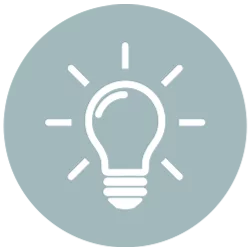Low vision care
We can help when you lose some of your sight.



Causes of low vision
Low vision has a variety of causes. The underlying cause of your low vision will determine what symptoms you experience and what treatments are right for you. Causes of low vision include:
- Glaucoma: vision loss caused by a build-up of internal eye pressure, which damages the optic nerve. Your optic nerve connects the light-sensitive retina of your eye with the brain to produce sight. Though treatable, this damage is often permanent. Common symptoms include blurred and narrowed fields of vision.
- Age-related macular degeneration: eye disease commonly associated with aging. It involves the breakdown of your macula, the central region of your retina, leading to decreased central vision.
- Diabetic retinopathy: condition that occurs in people with diabetes. Uncontrolled blood sugar damages the small blood vessels that nourish the retina, leaving them weak and prone to leaking fluid into the eye. It can cause dark spots, loss of color vision and blurred vision.
- Cataracts: condition in which the lens of your eye becomes cloudy and hard, leading to blurry vision, glares and halos. Cataracts are often associated with age.
- Congenital eye defects, such as retinitis pigmentosa.
- Eye injury or brain injury.
Diagnosing Low Vision
If you are experiencing any visual impairment that interferes with daily activities, you should book an appointment with your eye doctor right away. Your doctor will conduct a low vision exam, in which he or she will assess your visual acuity, peripheral vision and color vision.
Your doctor may also perform a dilated eye exam. This involves administering eye drops to make your pupils widen, which allows your doctor to examine inside your eye. He or she can check for problems that may cause low vision, such as degradation of the macula or damage to the retina.
Tools and treatments
Low vision cannot be cured by surgery, corrective lenses or contacts. In some instances – like cataracts and diabetic retinopathy – surgery or other medical treatments may slow or even improve low vision. However, in most cases, vision impairment is irreversible. But that does not mean you have to give up the daily activities you enjoy. There are a variety of tools that can maximize your remaining vision and help you maintain your independence and quality of life. These low vision aids include both optical and non-optical devices.
Optical devices
Optical devices are visual aids that help with daily tasks by directly enhancing your vision. You may want to incorporate more than one optical device into your daily activities, depending on what types of tasks are important to you.
For near tasks, like readings the newspaper or your smartphone:
- Illuminated handheld and stand magnifiers
- Strong reading glasses
For intermediate tasks, like viewing computer screens and managing personal finances:
- Midrange glasses
- Lamp-magnifiers
- Video magnifiers
For distance tasks, like watching a sports game, recognizing people and possible driving:
- Telescopic glasses
- Handheld telescopes
Additional optical tools to manage low vision include:
- Peripheral prisms and field-expanding lens systems to help manage decreased visual field.
- Glasses or sunglasses that filter light and reduce glares.
Non-optical devices
Whereas optical devices work to enhance vision directly, non-optical devices help you perform tasks by finding workarounds to your low vision.
Some popular non-optical devices and solutions include:
- Text reading software
- High-contrast clocks, watches or computer screens
- Large print publications
Additional non-optical strategies may include:
- Adjusting the lighting in your home/work environment.
- Eccentric viewing training, in which a low vision therapist will help you learn to compensate for poor central visual acuity by viewing objects peripherally.
Our low vision rehabilitation team will help you make the most of your remaining sight. You’ll get an individualized treatment plan, structured around helping you with your unique needs and challenges. We will help you to integrate new tools into your daily routine so you can get back to doing what you love.
Get a personalized plan
Treating low vision requires more than just optometry. We also work with community partners to provide personalized in-home training, occupational therapy, vocational training, mobility training and driving rehabilitation services. Additionally, we understand that vision loss can be frustrating and isolating. As such, we can help you get the mental health care that you need. Come see us today so you can learn to live your life to the fullest with low vision.

Low vision care
Kara Hanson, OD, Optometrist | UCHealth
Make an appointment at our Eye Center
Your eyes are in good hands

111 invention disclosures

40 active clinical trials

14 issued patents

4 “Inventors of the Year”


Meet your team
Dr. Kara Hanson
“It’s very rewarding to see how a person implements the tools and strategies they learn to improve their independence and quality of life.”
Dr. David Simpson
“I focus on how vision loss impacts a patient’s function and work with each patient to individualize a their treatment plan to meet their unique needs.”





